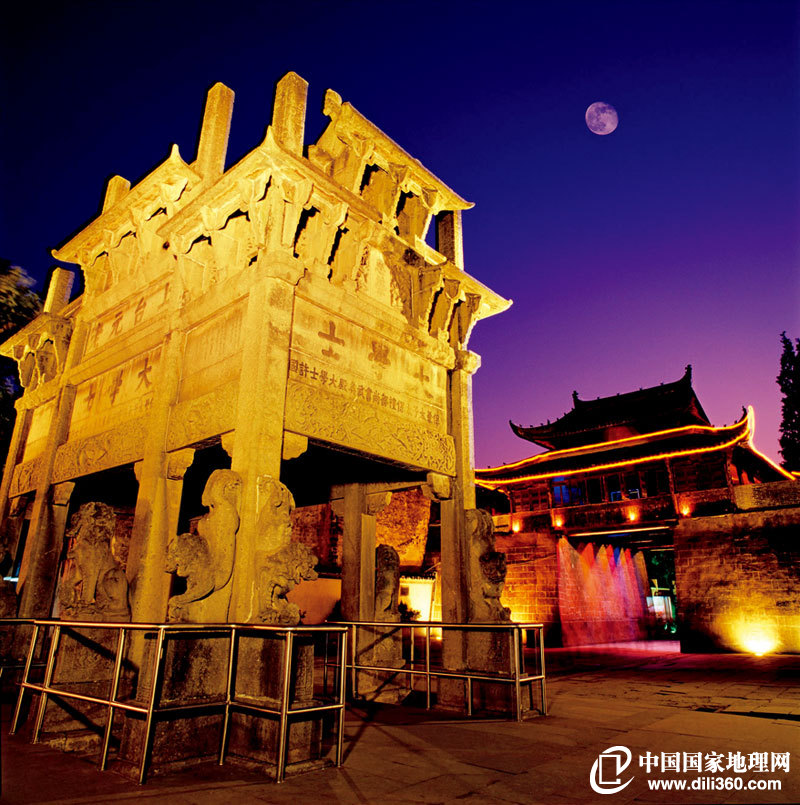 |
|
This memorial archway was built by Xu Guo to commend his contribution to suppressing the rebels. Different from the traditional archways with four pillars, it has eight pillars which serve as an emblem of Xu Guo’s status. The archway is made of granite and has the inscription by Dong Qichang, a famous calligrapher of the Ming Dynasty. Photo: Feng Jianping [Photo from Chinese Heritage]
|
Although, as stated earlier, there exist various opinions concerning the origin of memorial archways, and most people regard them as a variation of a gate and is likely to bear relation to biaolū and fayue, two parts of an ancient gate. The “lū” of biaolū means gate. During the Zhou Dynasty, the residential districts for common people outside of the imperial city were called “lūli”. For effective management, five households in the district were grouped into a lin and five lins were grouped into a li which was then surrounded by walls and the gate was named lū. During the Shang Dynasty, there was a man named Shang Rong who was respected by the people but expelled by King Zhou. After King Wu of the Zhou Dynasty overthrew the Shang Dynasty, he bestowed a horizontal board before the gate of the community where Shang Rong lived as a mark of respect and thus started the biaolū tradition. As years passed, biaolū gradually became a form of commendation: whenever people of the li performed a good deed, the government would hang an announcement or a horizontal board before the lū so as to commend good deeds as well as encourage them. And it was through this action that a close connection was established between the imperial power and common people.
We recommend:
